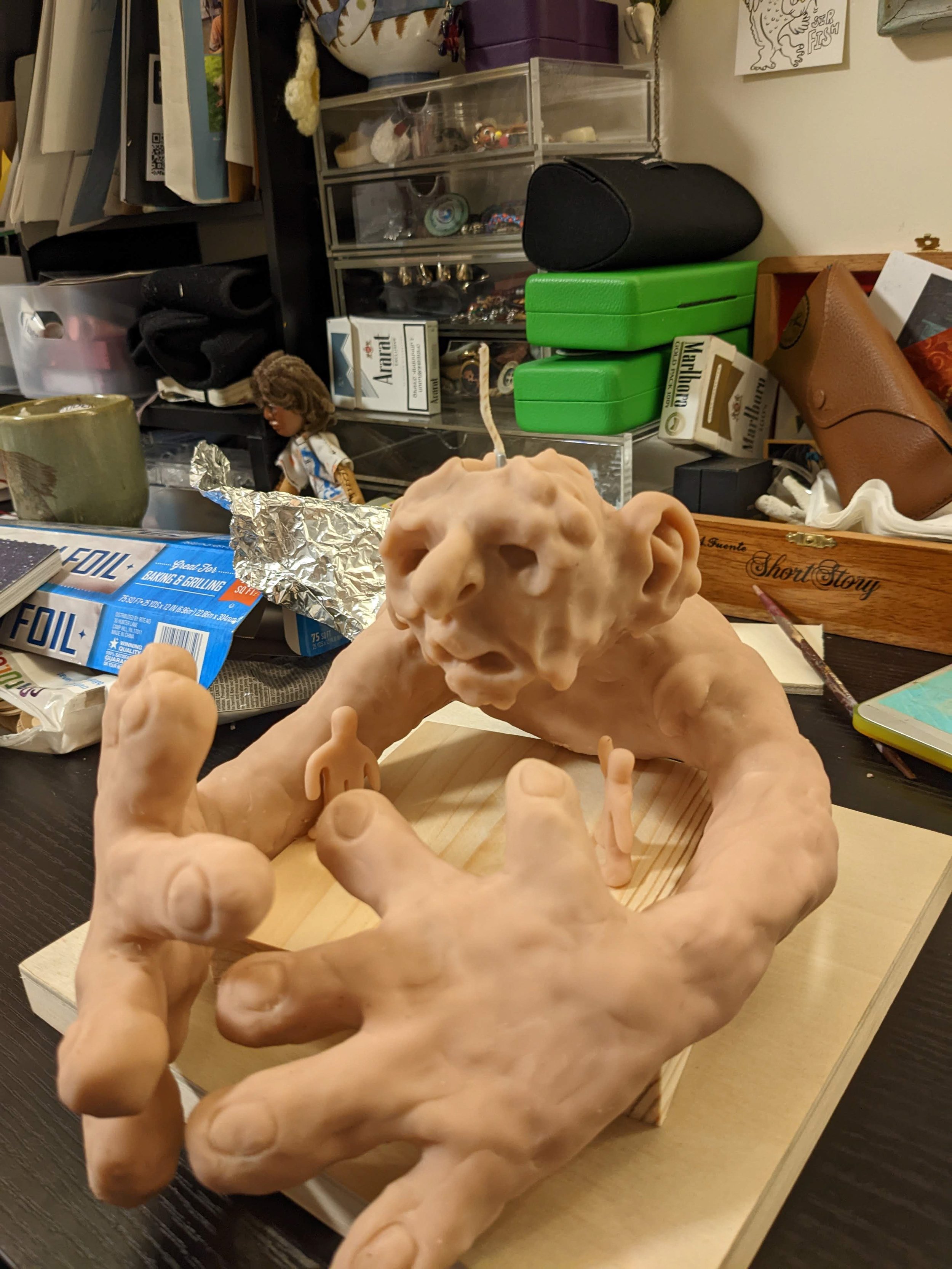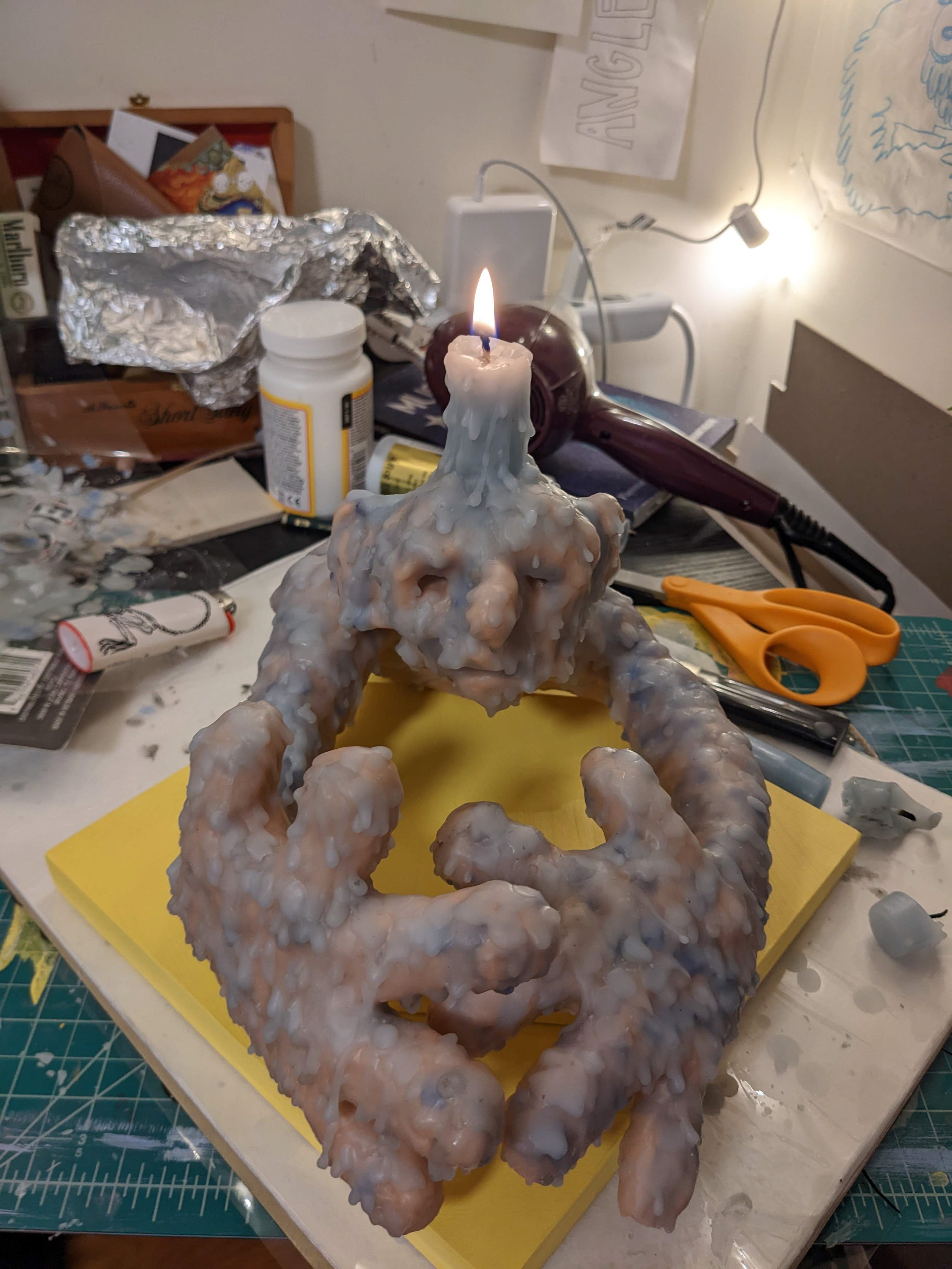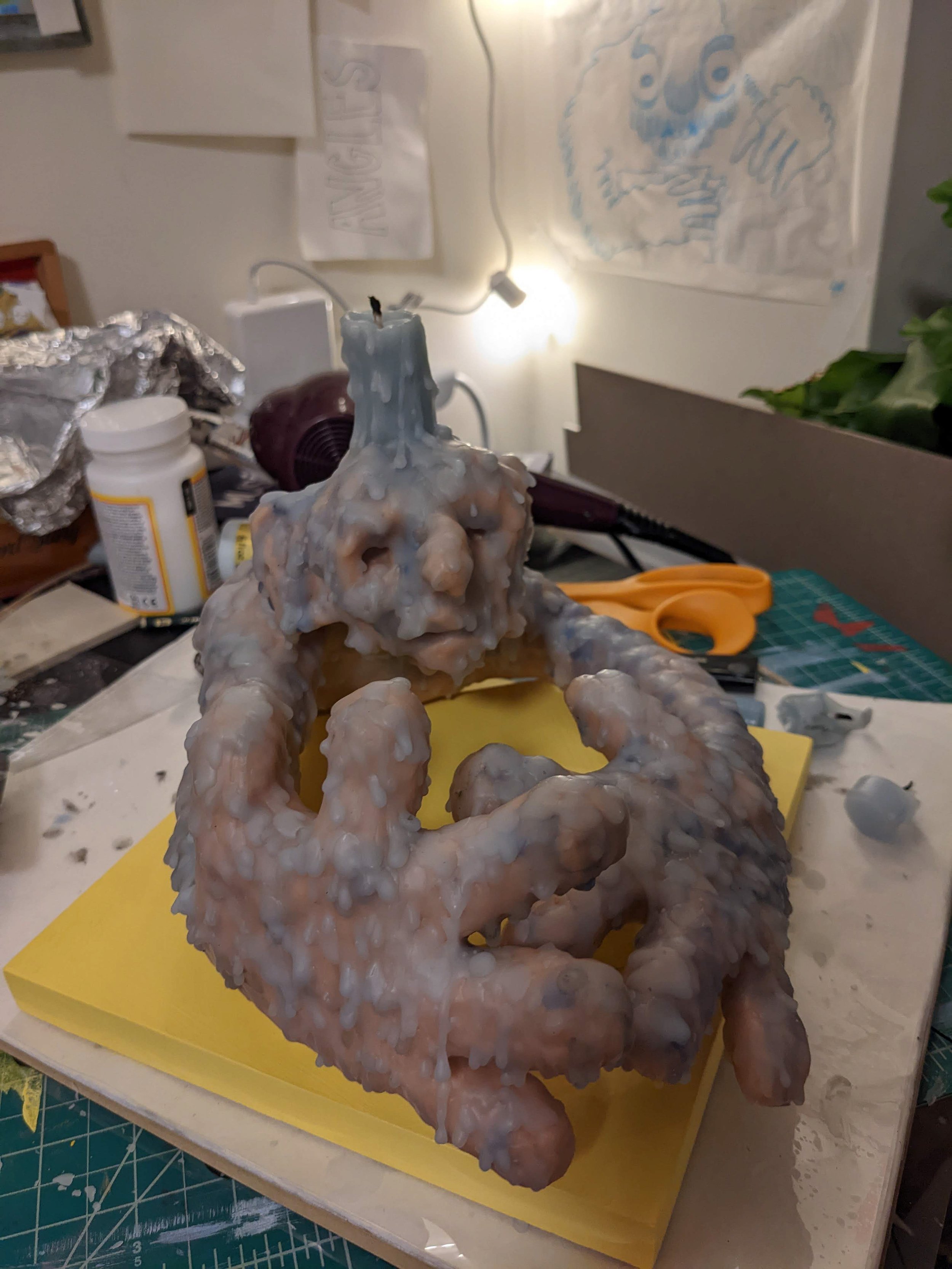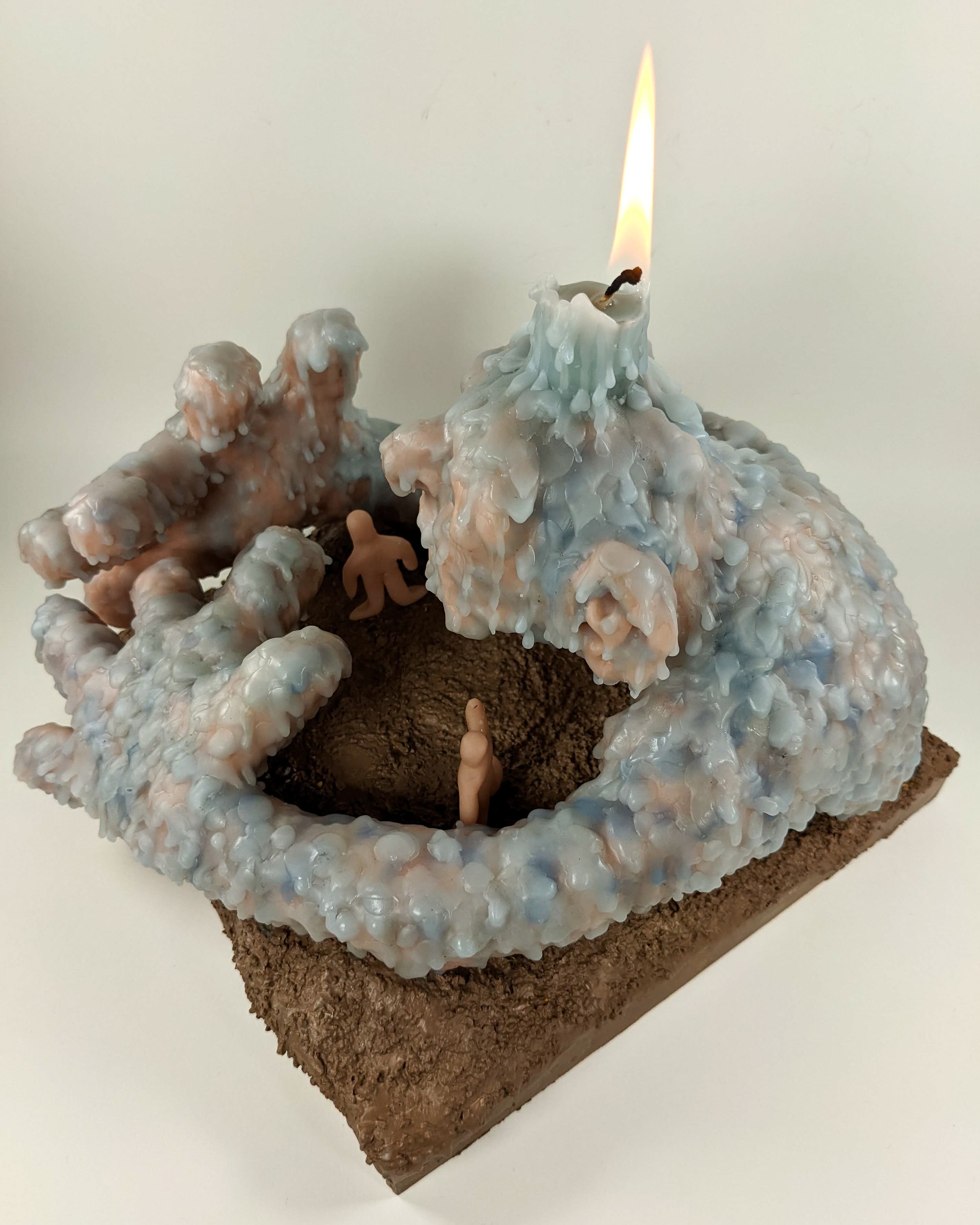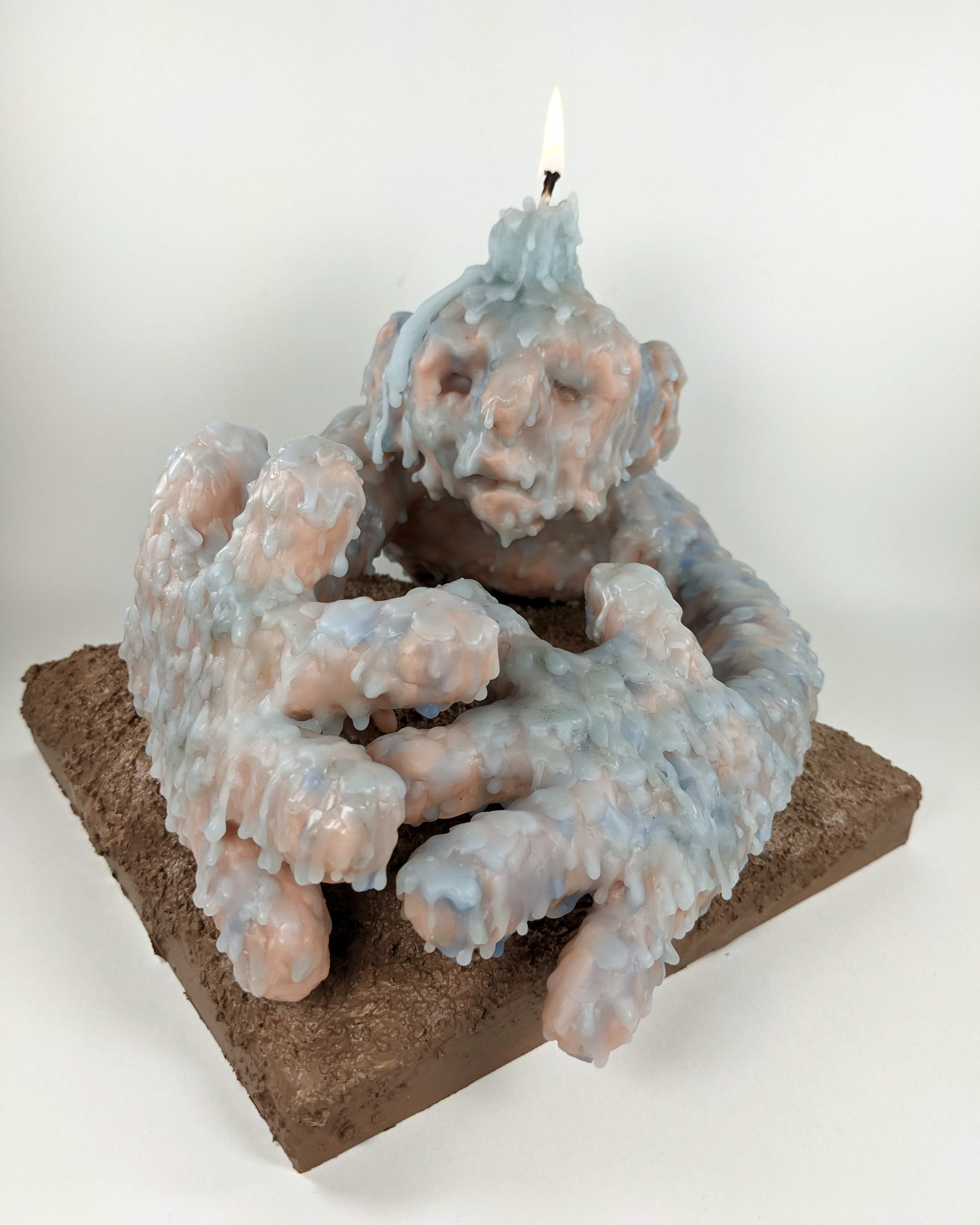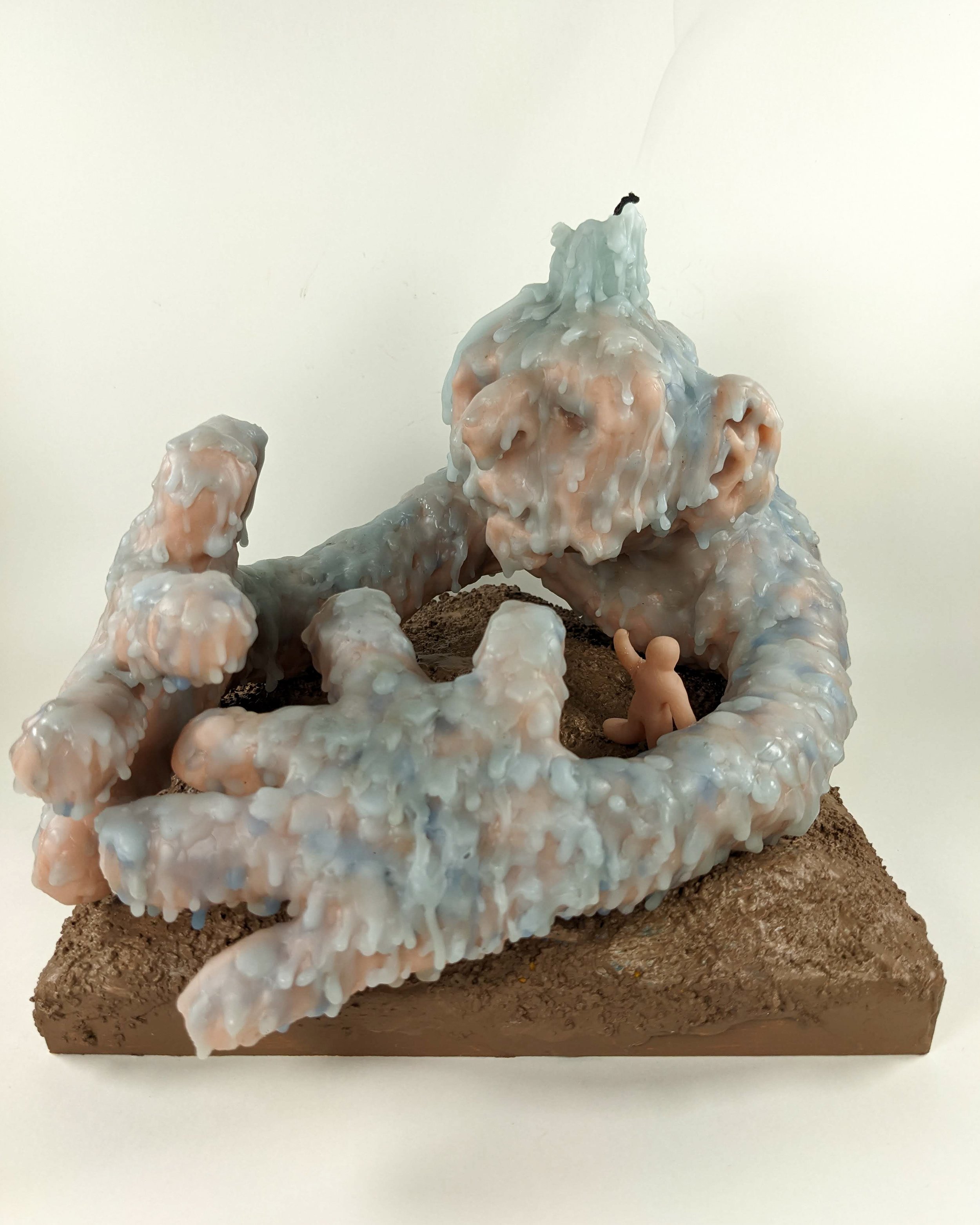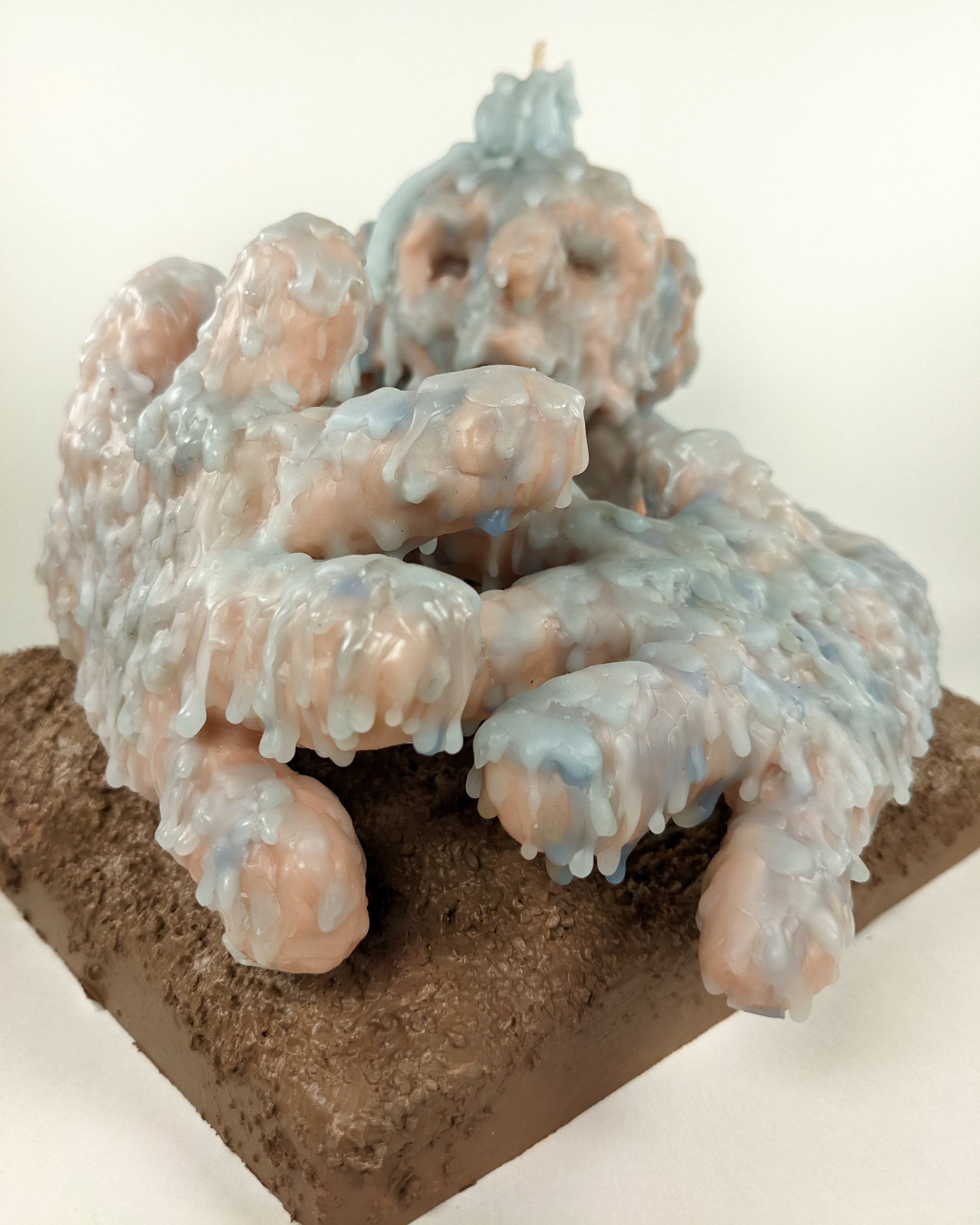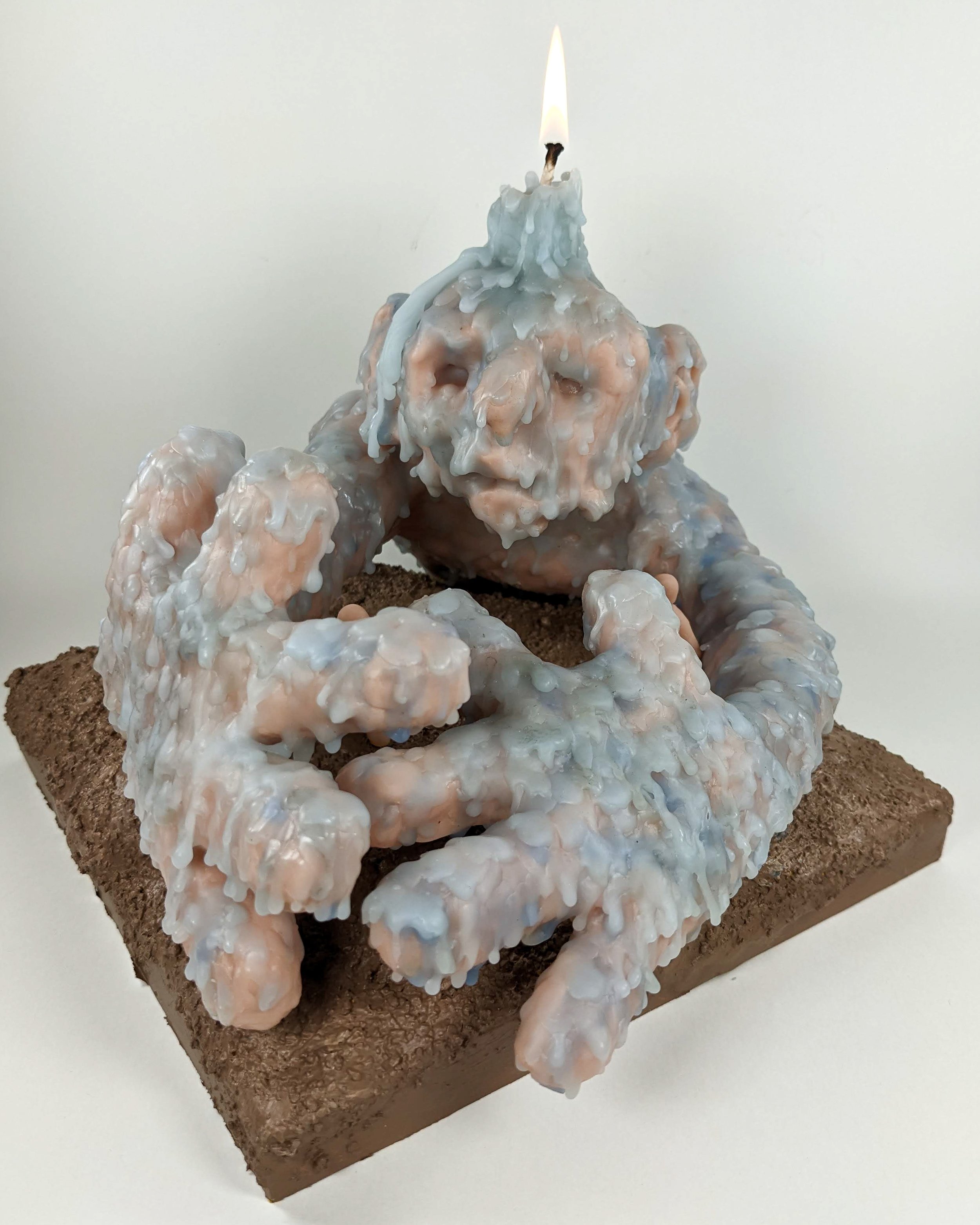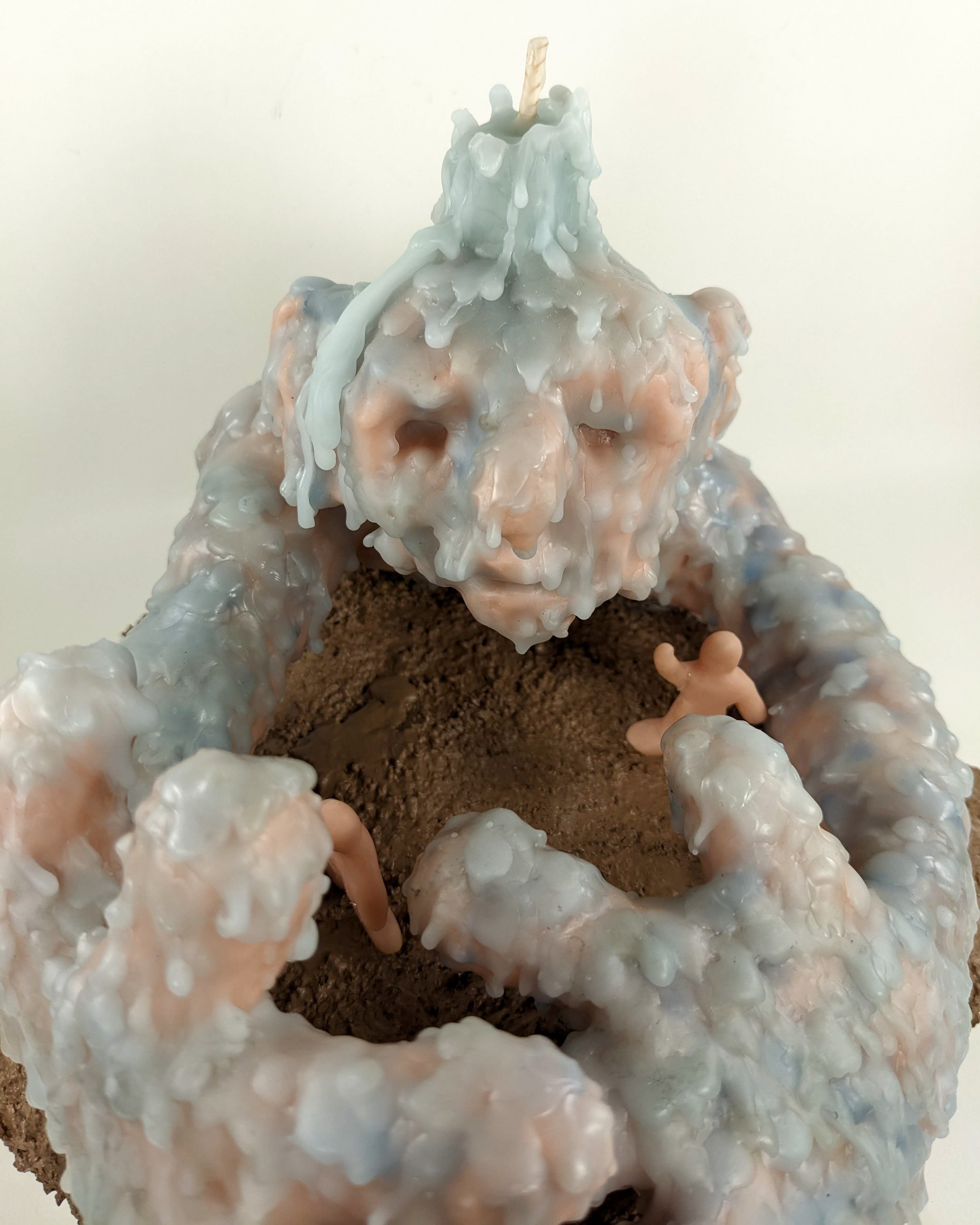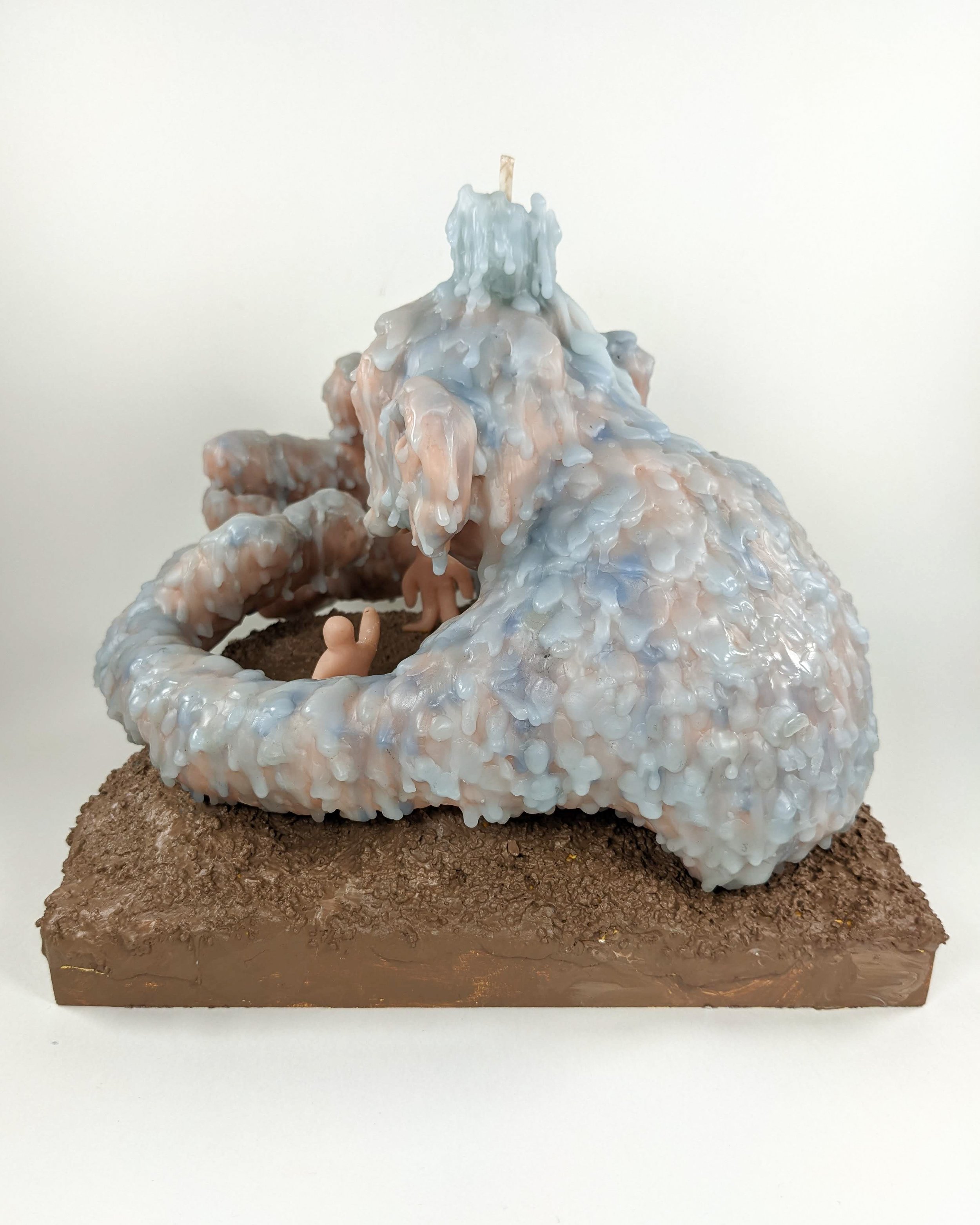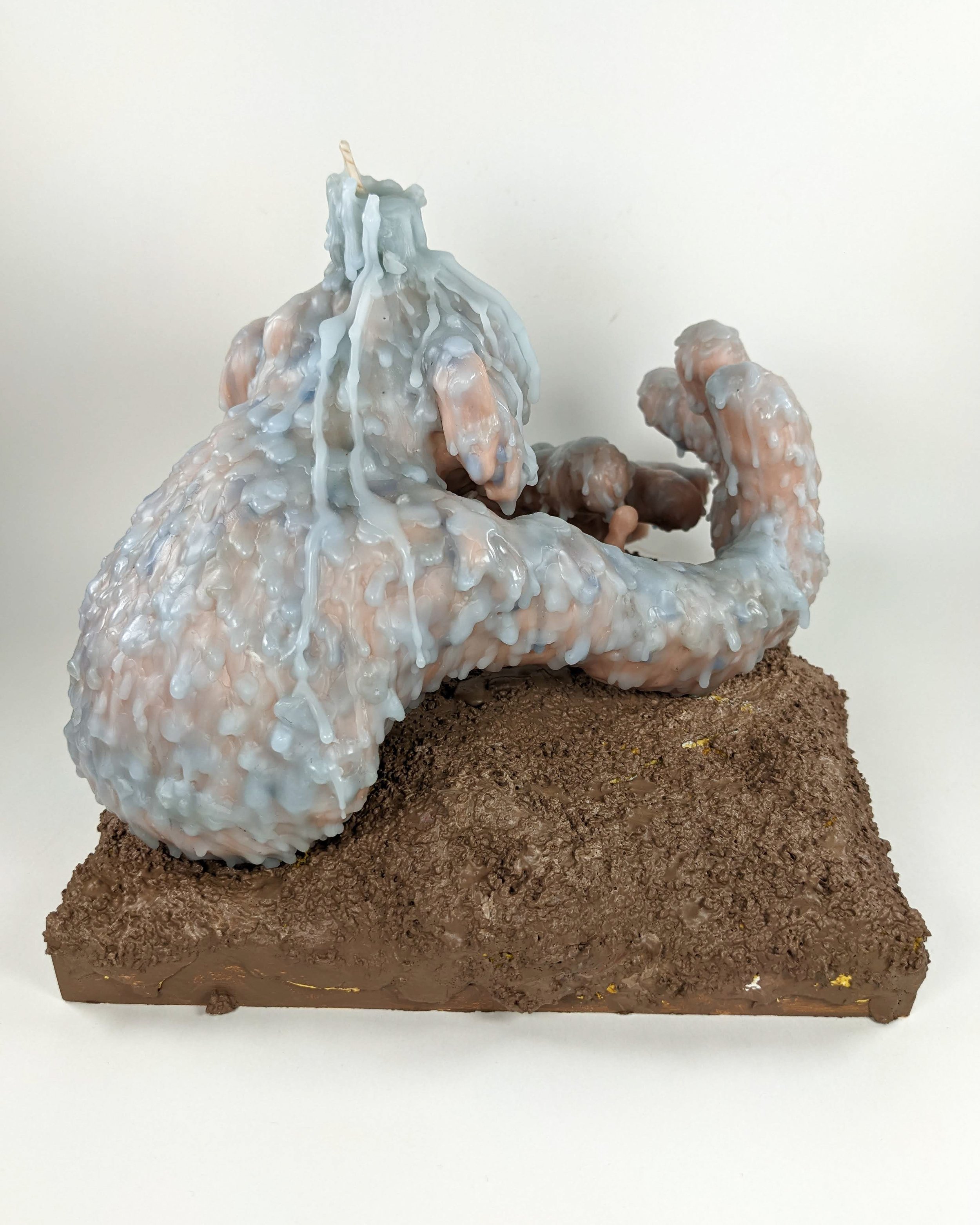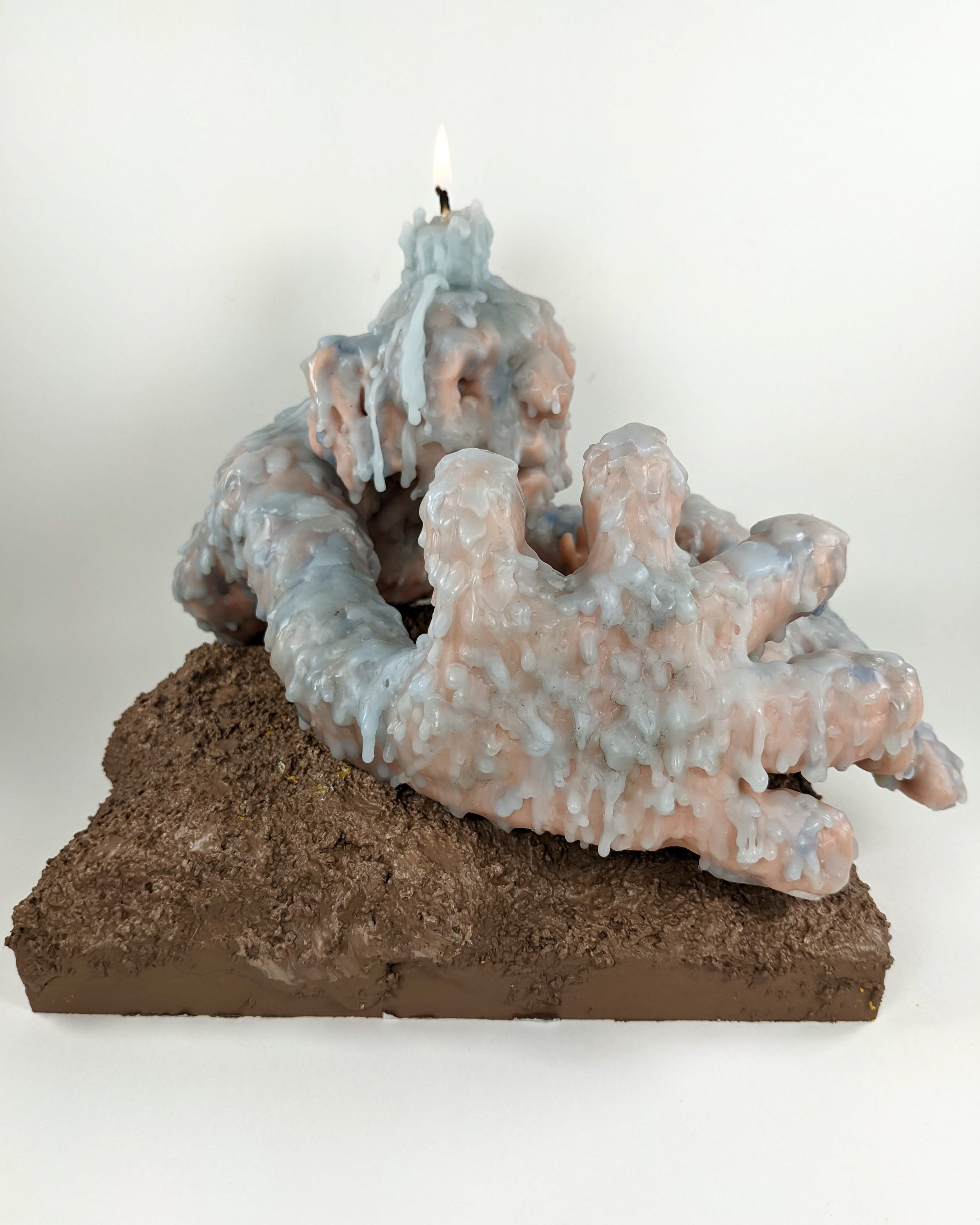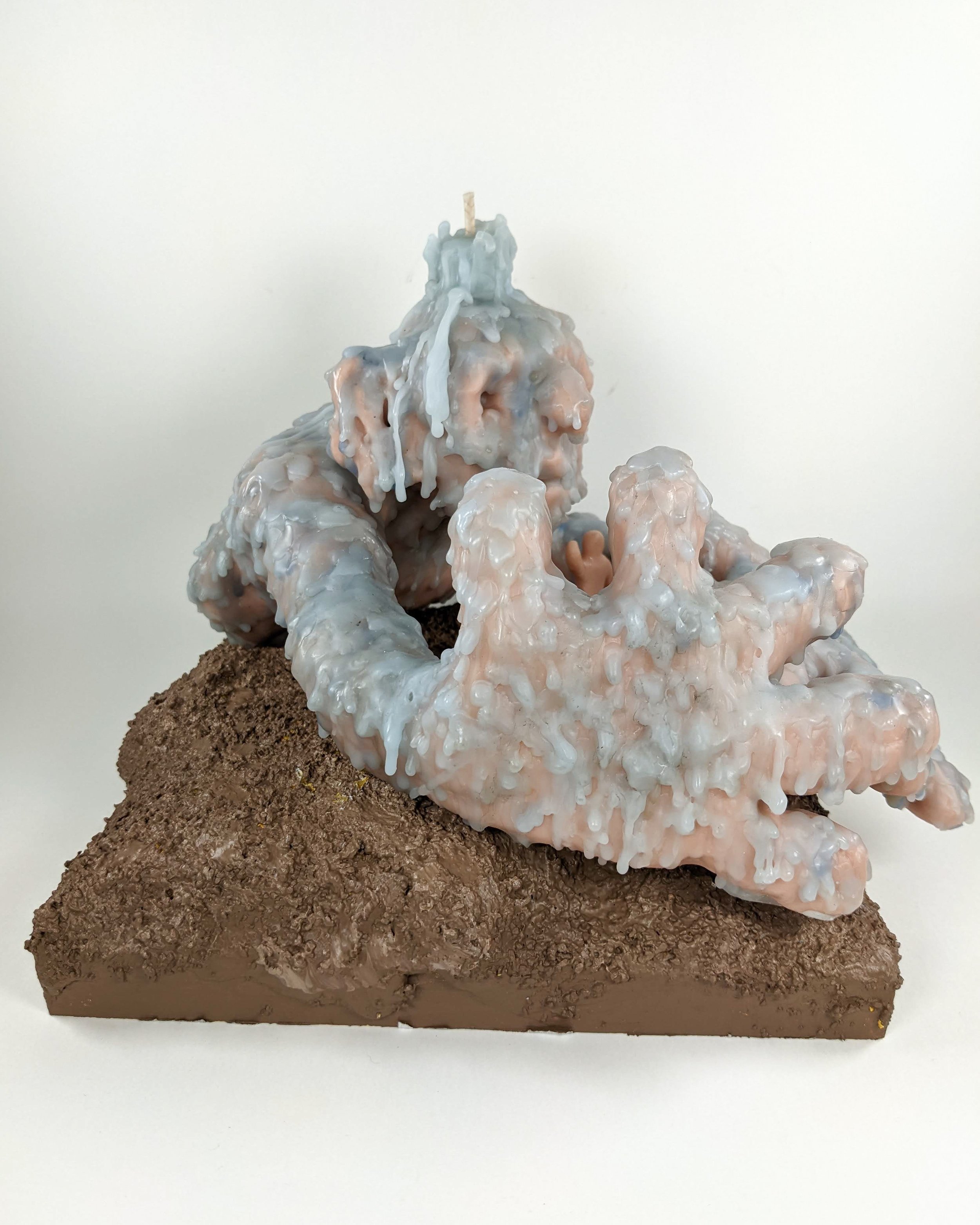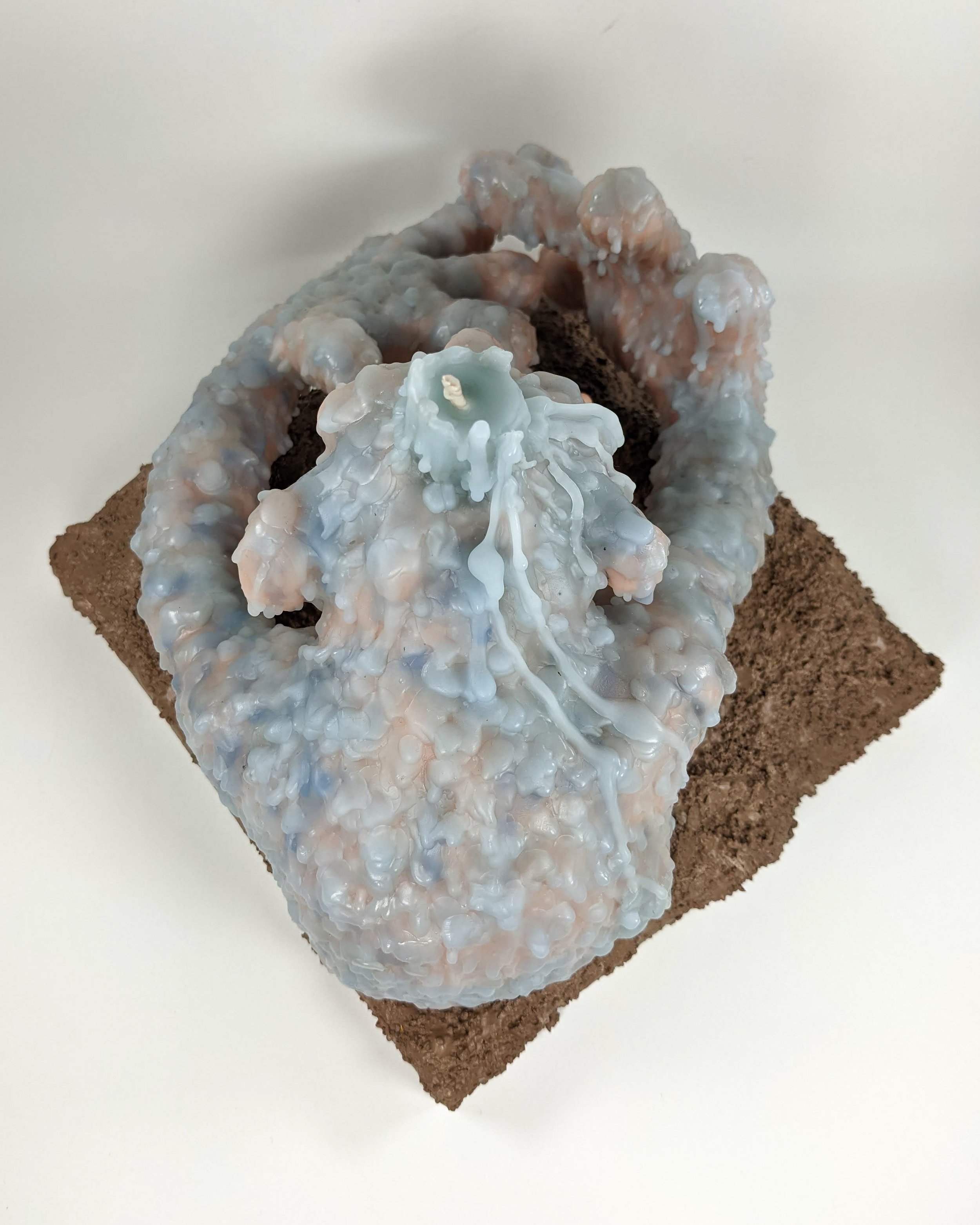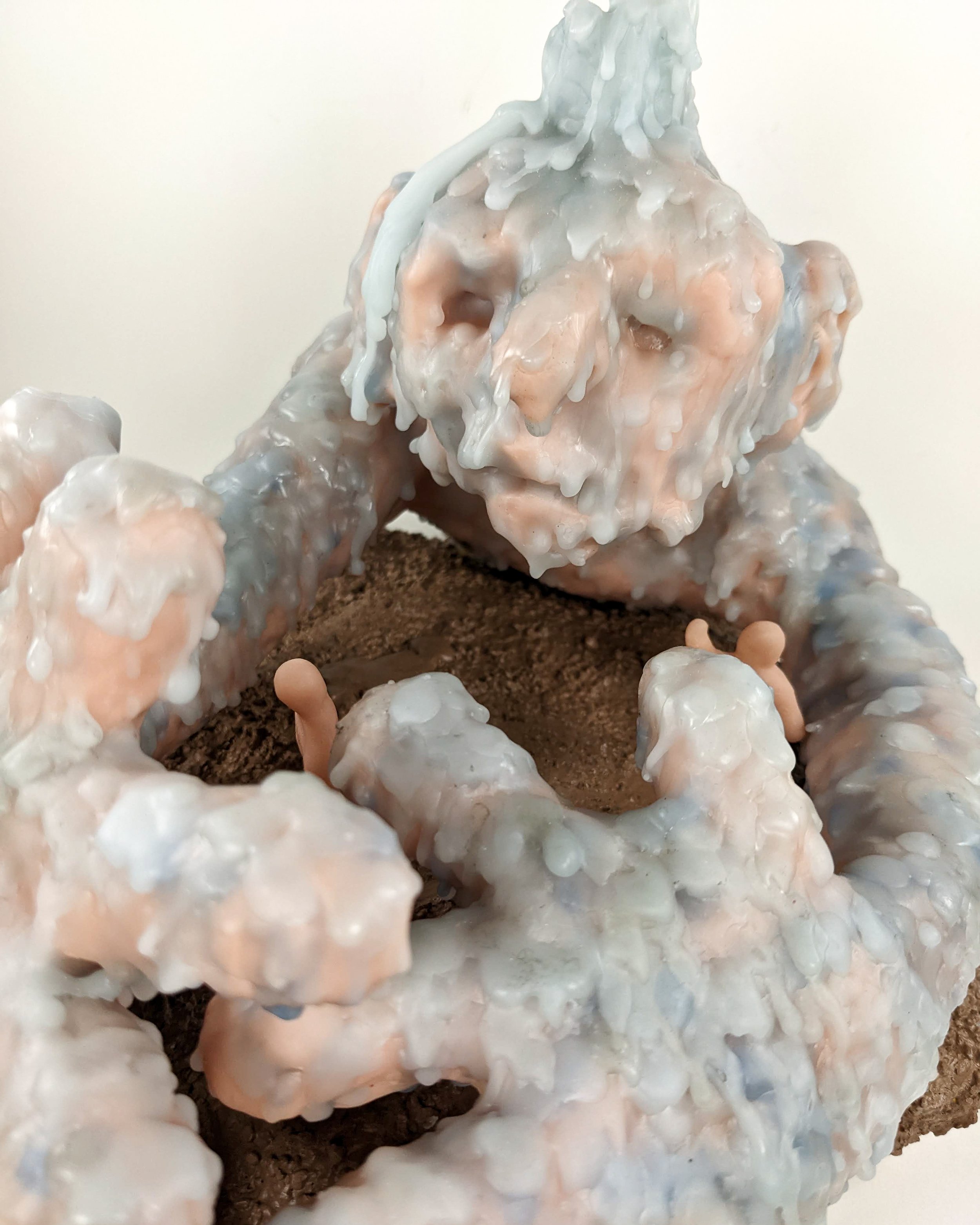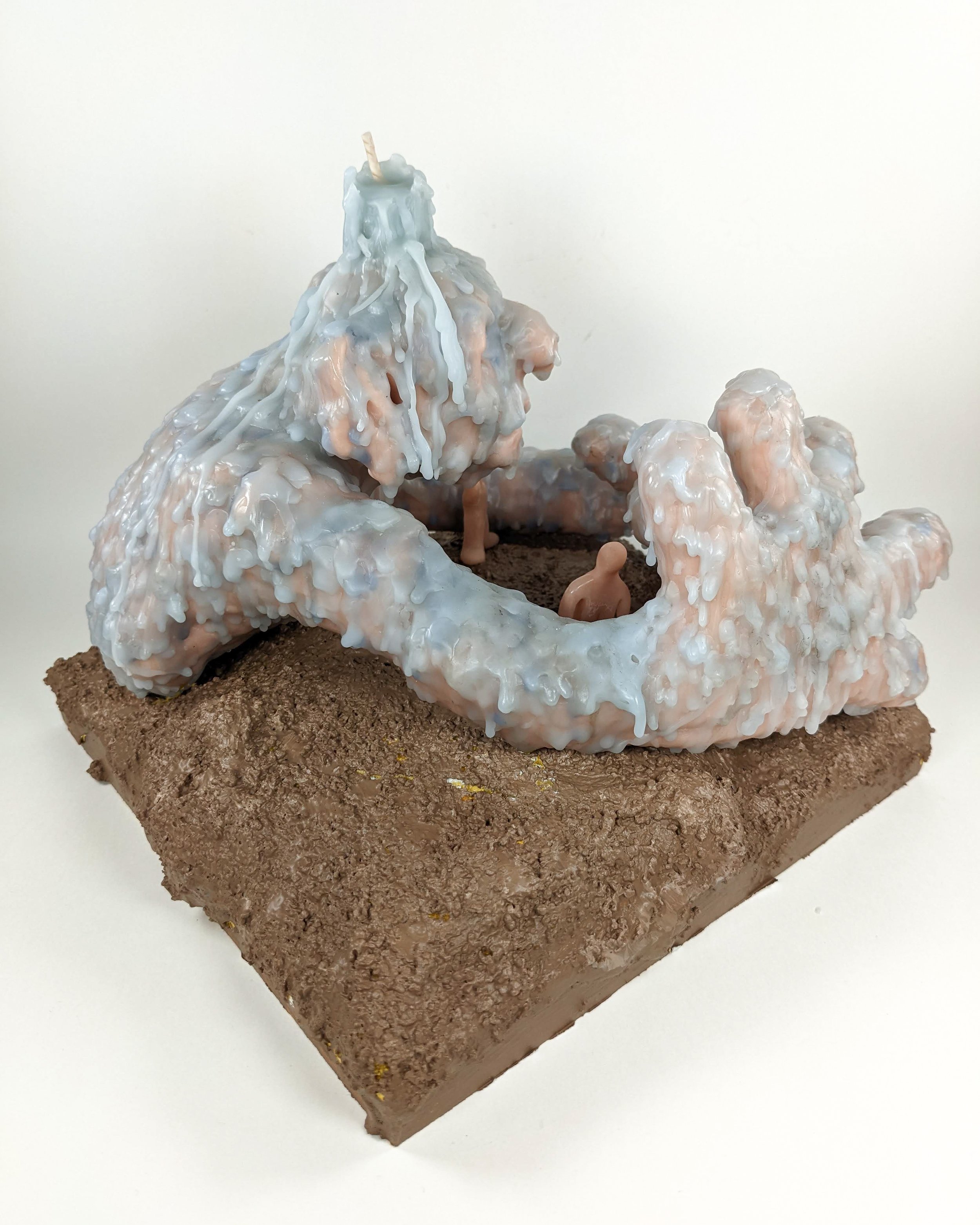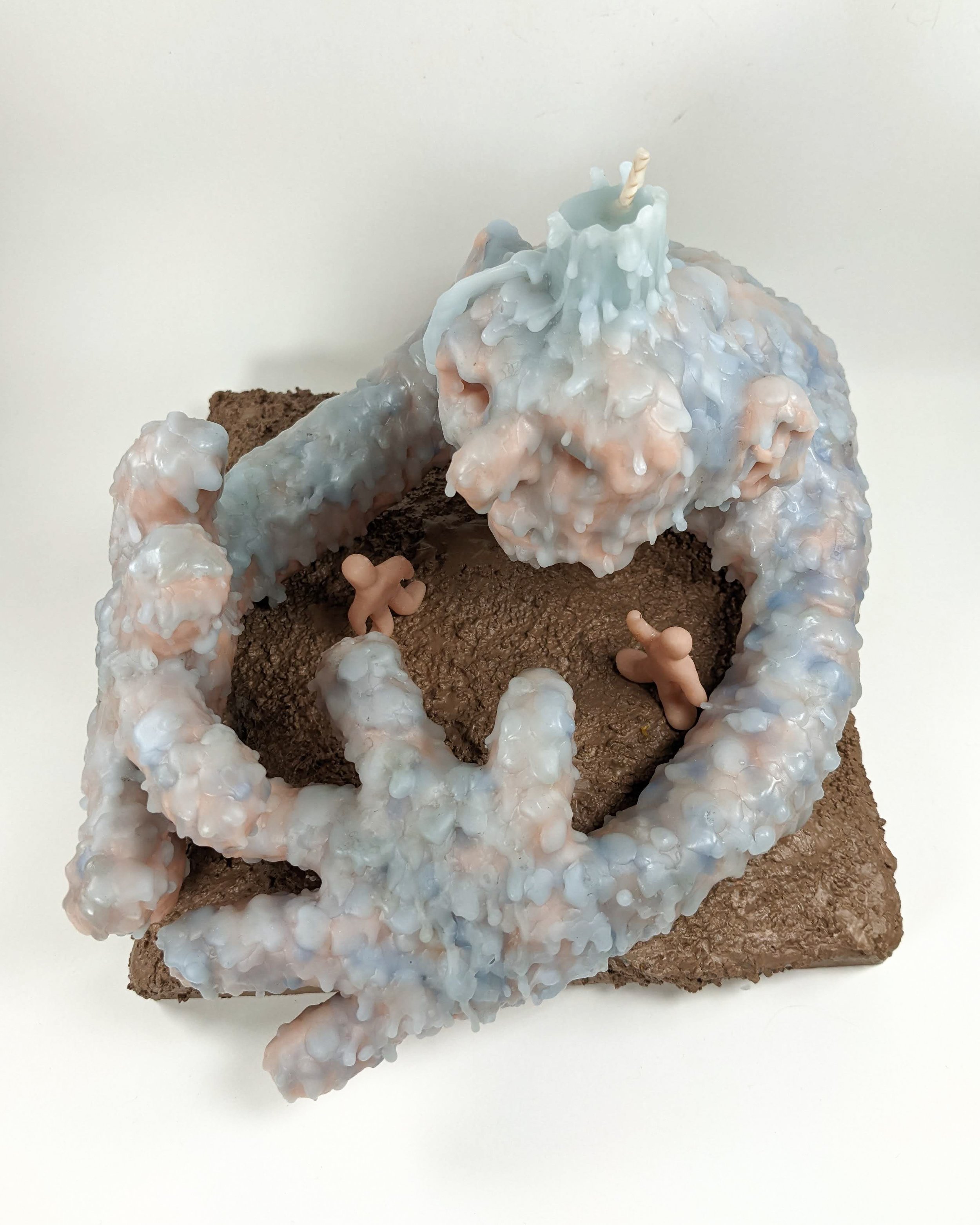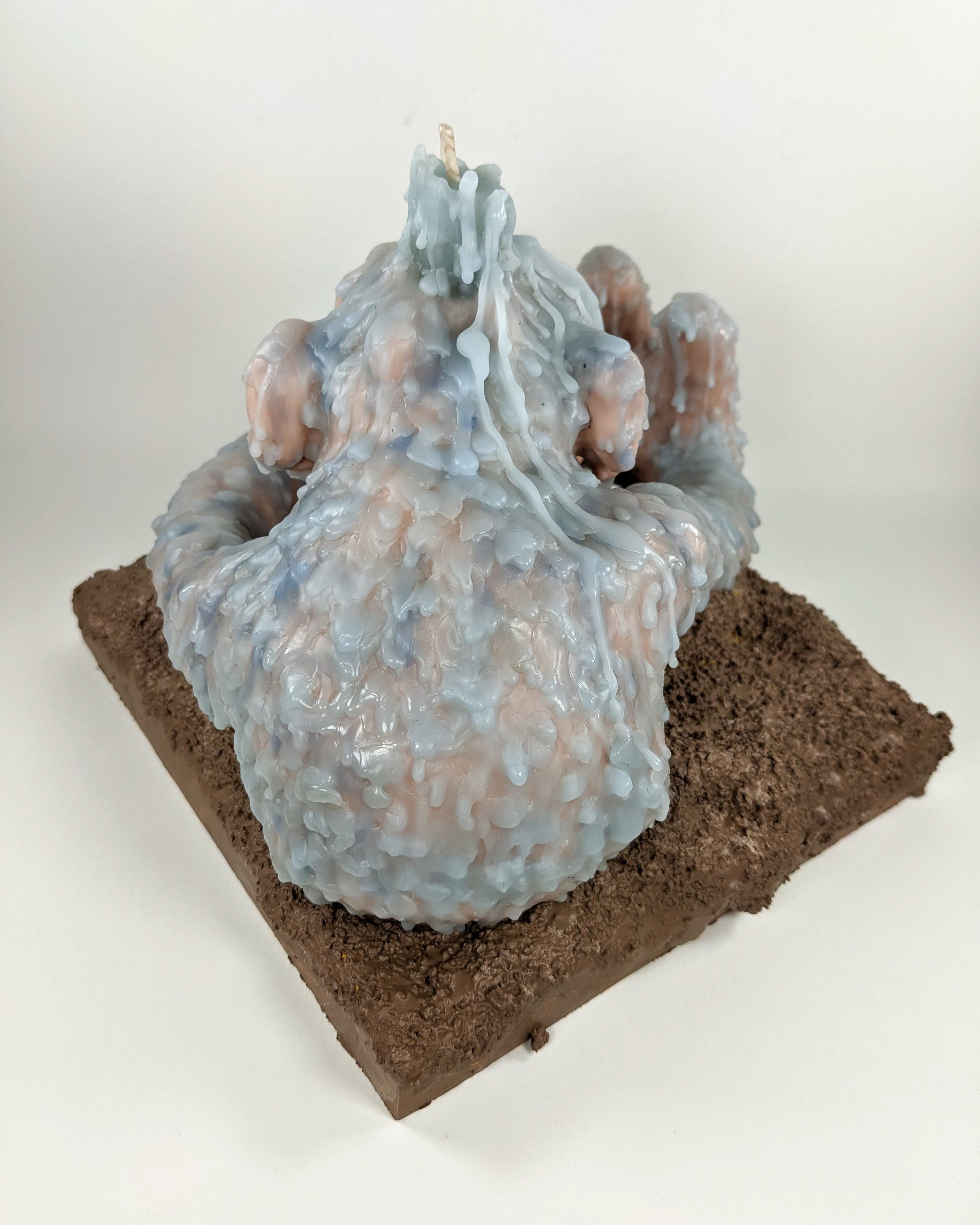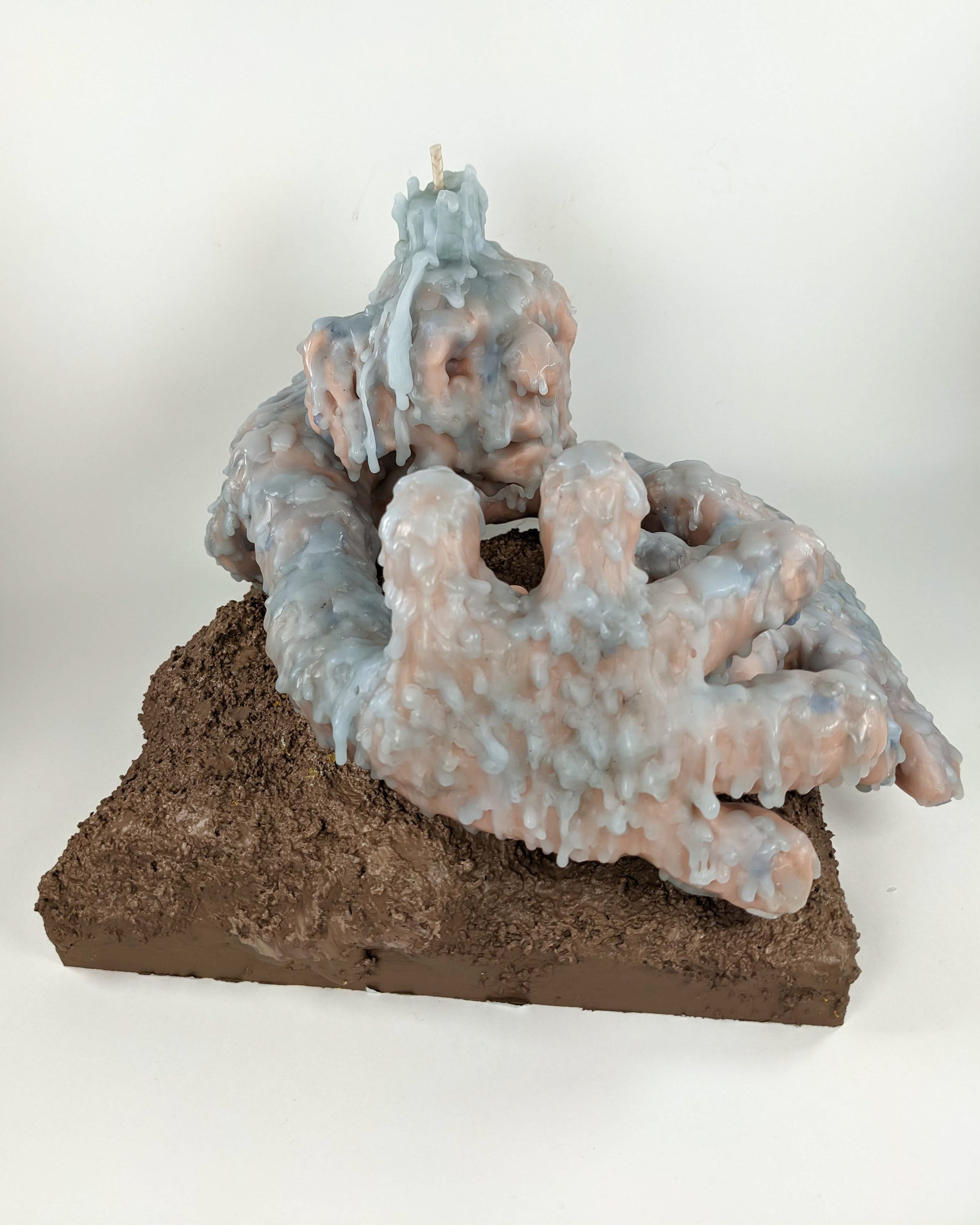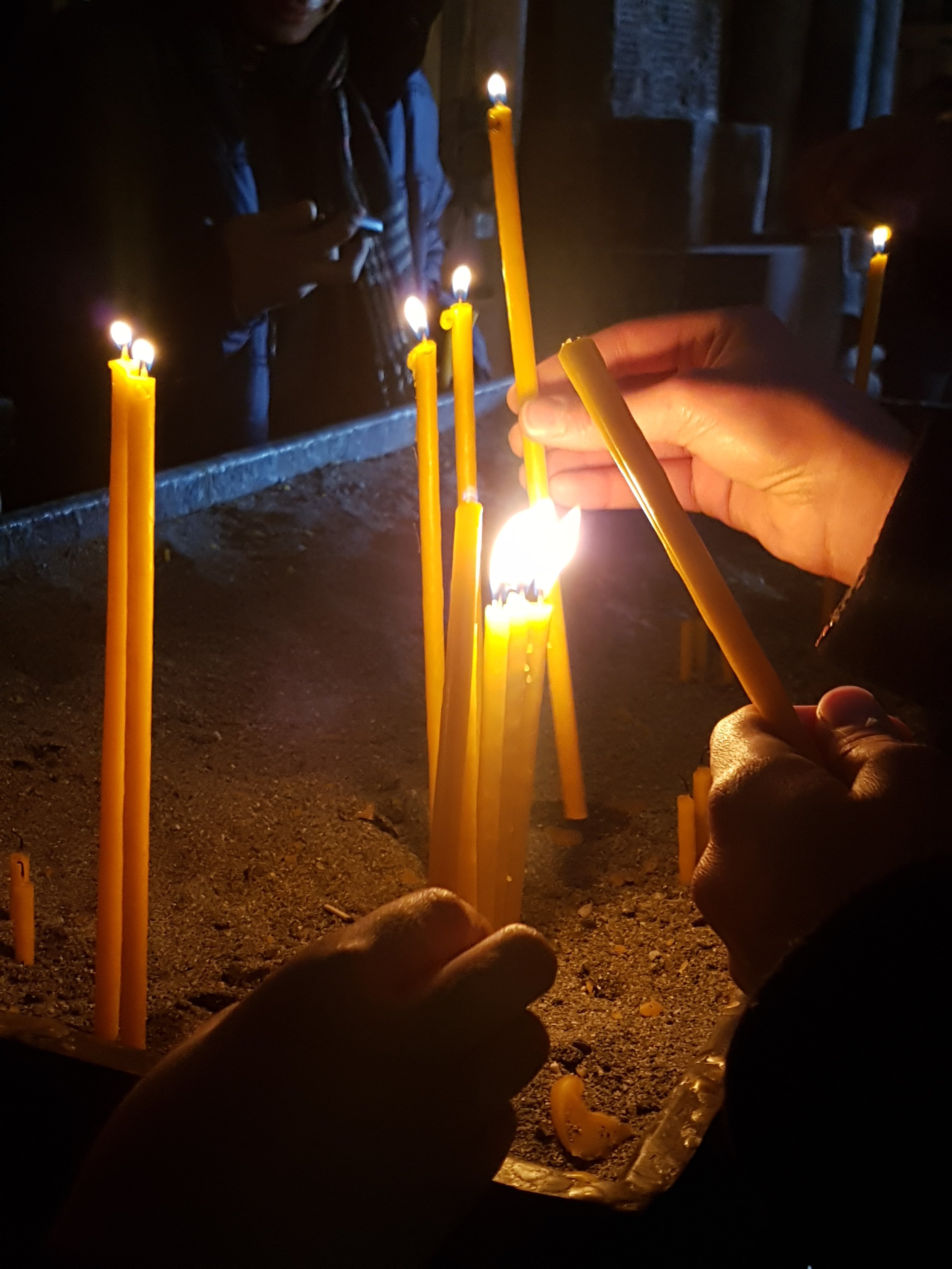Drip is an installation located in an outdoor space, but encased in a closed environment to ensure that the sculpture is burning consistently. The main platform is elevated, forcing the audience to actively seek out the experience, contort themselves and adjust themselves and their movements to the scale and order of the world created–the grand scale of the main figure and its surroundings forcing the audience into a state of feeling small.
The figure and concept are based on the Promethean myth. Combining the giving of fire to mankind and the creation of man and how he created mankind in the image of the gods, the installation explores the death of false gods, icons, standards and ideals in an attempt to celebrate individuality, self-acceptance and humanity. By having the character melting and reaching out to his own creations that are meant to mirror his own glory and appearance in the final moments of his demise, mankind is framed to have more control over themselves and their form than what they are supposedly modeled after.
The figure, for the most part, will be sculpted in a more permanent material to allow for the amount of wax dripping from it and into the space. The wax will drip from a candle that is mounted on top of the head of the figure, ripping onto it and gradually onto the sand-covered environment intended to be occupied by the audience.
The form and presence of the audience is essential to establishing the contrast in scale that is the basis for the concept being executed. The hope is that they walk away from the space and the experience with a newfound sense of self-worth, agency and wonder.
The feel and materiality of the wax as it melts lacks permanence and evokes malleability and a controlled and gradual process of deterioration and physical metamorphosis. The sand acts as a grounding force, creating traction and a way of making the audience feel more present in the space.
Inspiration:
Georges Méliès
Texture: melting candles lit in Armenian churches
Society (1989, directed by Brian Yuzna)


